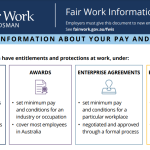Friendship risked if you don’t communicate partnership agreement risks
 With the exception of starting a business as a sole trader, business partnerships are the next most common type of business structure. They’re also one of the riskiest business structures and the most likely to fail due to disagreements or conflict.
With the exception of starting a business as a sole trader, business partnerships are the next most common type of business structure. They’re also one of the riskiest business structures and the most likely to fail due to disagreements or conflict.
A partnership involves two or more people (but no more than twenty) going into business together, and without developing a process or structure for operating the partnership, they can breakdown.
One of the surest ways to protect a business and, indeed, the partnership itself, is to have a partnership agreement in place. A partnership agreement is a legal document that sets out, among various other things, the terms of the partnership, including the roles and responsibilities of each partner, how decisions will be made, how profits will be distributed, and how disputes will be handled. It also sets out the type of partnership that has been formed.
There are two kinds of partnerships that can be formed – a general or limited partnership. In the former, all of the partners are equally responsible for the management of the business and each has unlimited liability for the debts and obligations it may incur.
Limited partnership agreements can offer greater protection
General partnerships are common in family businesses (although they’re usually operated as a family partnership), as well as businesses where each partner will contribute equally to the management and operation of the business. In a business where some partners will have full management responsibility for the day-to-day running of the business, while others will not, they’re usually operated as a limited partnership.
A limited partnership must consist of at least one general partner, who assumes the debts, obligations and daily operation of the business, as well as, at least, one limited partner whose liability is proportional with their investment, and who generally has no input in the management of the business.
Limited partners are typically known as ‘silent’ partners whose role doesn’t extend much beyond making an initial capital investment in exchange for a share of firm’s profits. In this respect, a limited partnership offers two key advantages:
- the general partner has the freedom to run the business without interference; and
- it protects the limited partner financially and otherwise if something goes wrong.
Things to consider with limited partnerships
Suppose you and two friends want to start a business together. Structuring the business as a partnership with two general partners and one limited partner is a good move if the third friend – the limited partner – only wants to contribute financially, for which they receive a share in the profits, commensurate with their investment.
A limited partnership is not suitable if that third, limited partner still wants to contribute to the business in some other shape, as a bookkeeper, for example. A provision under the Partnerships Act 1958, prohibits limited partners from taking part in running the partnership, carry out work on the business’s behalf or enter a contract on behalf of the firm.
Whatever type of partnership you decide to form, it must be registered with the department of fair trading in the state or territory in which the partnership has been formed or will operate in. You will also need to register for an ABN and register your business name, both of which you can now do through the Australian Securities and Investment Commission (ASIC).
Don’t forget your partnership agreement
As it was mentioned earlier in this blog post, it’s very important to create a partnership agreement – in fact, it’s crucial. Although one of the most popular, a partnership is also one of the riskiest, simply because it requires two or more people to all work together amicably and without conflict or disagreement, all of the time.
Nearly every person who goes into business with someone else does so with the best of intentions, but there’s an old expression about good intentions – the road to hell is paved with them. It’s a bit of a pipe dream to think that you and your prospective partners will be able to operate a business – that’s also your livelihood and, quite often, main source of income – without disagreeing at some point, regardless of how well got along in the past.
Nearly 80 percent of all enquires The Australian Small Business Centre receives about partnerships have occurred because the partnership is in crisis and there was no prior written partnership agreement in place. To help these partnerships, and to help protect future partnerships from going down the same rocky path, we developed a partnership agreement template with a corresponding workbook that guides you through the process of creating a partnership agreement.
Purchase our partnership agreement template and workbook online from our website, or for more information about how to structure a business, read our four part series of blog posts on business structures or enrol in our Business StartUp Course.
Free Partnership Agreement Information
![]() Do you want to learn something about business partnerships and the important clauses and information you need to discuss with your friend before you enrol for the course and template? We have a free email course that provides information that you can forward to your friend and use as a basis for discussions. If this interests you, then register now.
Do you want to learn something about business partnerships and the important clauses and information you need to discuss with your friend before you enrol for the course and template? We have a free email course that provides information that you can forward to your friend and use as a basis for discussions. If this interests you, then register now.



















